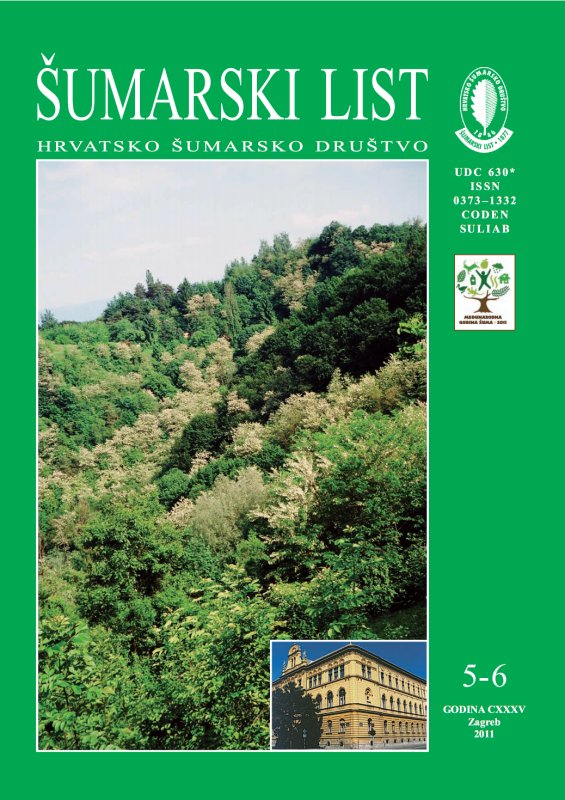| |
| RIJEČ UREDNIŠTVA |
| |
|
|
| Uredništvo | |
| DEVELOPMENTAL STRATEGY (STRATEGIES)
pdf
HR
EN
|
213 |
| |
| IZVORNI ZNANSTVENI ČLANCI |
| |
|
|
| Kutnar,L., D. Matijašić, R. Pisek | UDK 630* 907 : 629 + 114.4 (001) |
| Conservation Status and Potential Threats to Natura 2000 Forest Habitats in Slovenia
pdf
HR
EN
|
215 |
| Lubojacký,J., J. Holuša | UDK 630* 453 (001) |
| Comparison of Spruce Bark Beetle (Ips typographus) Catches Between Treated Trap Logs and Pheromone Traps
pdf
HR
EN
|
233 |
| |
| PRETHODNO PRIOPĆENJE |
| |
|
|
| Posavec,S., M. Šporčić, D. Antonić, K. Beljan | UDK 630* 649 |
| Inovation Fostering – Key Factor of Development in Croatian Forestry
pdf
HR
EN
|
243 |
| Planinšek,Š., A. Ferreira, A.Japelj | UDK 630* 116 + 907 |
| A Model for Evaluation of the Hydrological Role of a Forest
pdf
HR
EN
|
257 |
Abstract: The aim of this paper is to present a method for allocating and evaluating forest areas with hydrological roles and for determining the necessary forest management measures. The method was tested in the Draga watershed, which is characterised by a high proportion of forest cover (83 %). The development of a GIS-based decision support model first required determining the needs for the forest hydrological role as well as the capacity of forest sites for providing that role. The needs for the hydrological role of forest are expressed by external, ecological factors (terrain slope and forest soil types distinguished by their erodibility and ground porosity). A forest’s capacity to assure the hydrological role is expressed by internal, forest stand factors (stand structure, stand density and the degree of stand naturalness). The merged variables describing the needs and capacity were further divided into three groups: low-medium-high needs and high-medium-low capacities for providing the hydrological role. Overlapping the needs and capacity revealed locations where the needs exceed the capacity, and where erosion problems may occur in the field. A side-result of the model is the list of necessary forest management measures for enhancing forest hydrological role that can be applied to every combination of external and internal factors.
Key words: alpine watershed; evaluation model; forest; hydrological role; multiple-use forestry; suitability evaluation; alpine watershed; evaluation model; forest; hydrological role; multiple-use forestry; suitability evaluation |
| |
| STRUČNI ČLANCI |
| |
|
|
| Poljak,I., M. Idžojtić, M. Zebec | UDK 630* 174 + 652 |
| Woody Plants of the Zagreb Zoo Garden
pdf
HR
EN
|
269 |
| Domac, J., Z. Benković, V. Šegon, I. Ištok | UDK 630* 537 + 741 |
| Critical Factors in Developing National Pellet Market
pdf
HR
EN
|
281 |
| |
| ZNANSTVENI I STRUČNI SKUPOVI |
| |
|
|
| Tomljanović, Kristijan | |
| Populationsökologie von Raubsäusgarten
PDF
|
308 |



